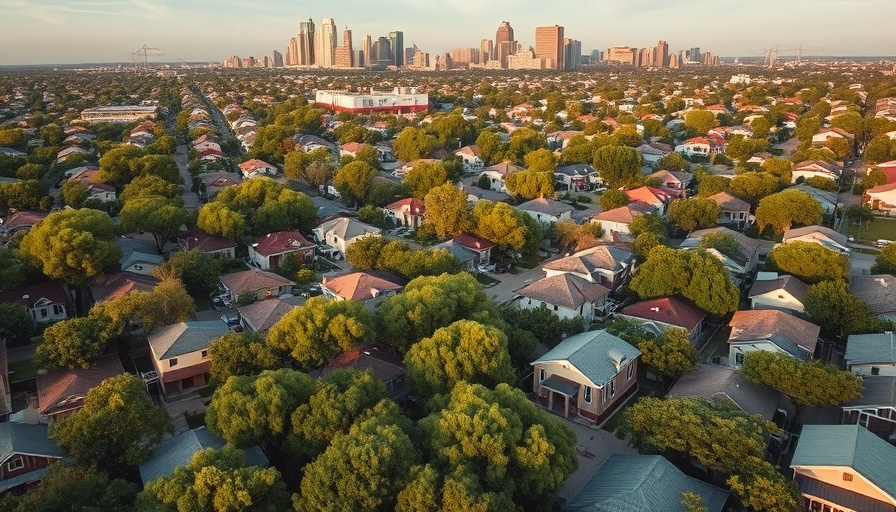
Texas Takes a Bold Step to Transform Urban Living
In a progressive move, Texas lawmakers are pushing forward legislation aimed at allowing denser neighborhoods in larger cities. This initiative not only addresses housing shortages but also aims to create a more inclusive community fabric, especially in fast-growing urban areas like Austin and Dallas. The proposed policies will enable the construction of multi-family units, attracting a more diverse demographic and fostering vibrant, interconnected neighborhoods.
The Urgency of Addressing Housing Challenges
With Houston, Austin, Dallas, and San Antonio experiencing continual population growth, the demand for affordable housing has skyrocketed. According to recent reports, Texas ranks among the top states for population influx, with thousands moving in each year. Facing this surge, lawmakers recognize that adjusting zoning regulations to allow for denser developments can help alleviate the housing crisis, reducing commute times and fostering local economies.
Community Benefits of Denser Neighborhoods
Consolidated neighborhoods can meet the need for more affordable housing and present several advantages. They promote walkability, accessibility to public transportation, and increased opportunities for social interaction among residents. More people living closer together helps to create vibrant communities, with enhanced access to parks, shops, and public services.
Counterarguments: Concerns or Opportunities?
While the plans seem promising, they have garnered both support and skepticism. Critics argue that increased density could lead to overcrowding, strain on public services, and changes to the character of established neighborhoods. However, proponents assert that with careful planning and community engagement, these neighborhoods can be designed to fit seamlessly into existing infrastructures without compromising quality of life. Balancing growth with preservation is essential for sustainable urban planning.
The Potential for Greater Local Engagement and Decisions
As the proposal moves forward, local communities will have an opportunity to engage in shaping their neighborhoods. Public forums and discussions will allow residents to voice their opinions—offering insights that can shape the implementation of denser development. This approach fosters transparency and collaboration between lawmakers and constituents, emphasizing community needs while accommodating inevitable growth.
Looking Ahead: Future Trends in Texas Urban Development
The trajectory for urban development in Texas suggests a shift towards more comprehensive urban planning that accounts for increasing population density. More cities are likely to adopt similar policies, which could lead to a trend where sustainable development practices become the standard rather than the exception. Such changes could just as effectively address urban sprawl, climate change, and affordability, paving the way for modern, resilient cities in Texas.
Practical Insights for Residents
For Texas residents, understanding these legislative changes is crucial. Staying informed about local news—especially in booming areas like Dallas and Frisco—will empower citizens to participate in these developments actively. In knowing how density affects their daily lives, they can advocate for their needs and preferences within the framework of this new urban space.
As Texas embarks on this new path, it will be crucial for residents, city planners, and lawmakers to work in harmony, ensuring that the future of urban living not only accommodates growth but enhances the quality of life for all its residents.
Stay engaged and informed about these developments—subscribe to your local news sources, participate in town hall meetings, and advocate for the neighborhood you want to see. Your voice matters in shaping the future of Texas neighborhoods.
 Add Element
Add Element  Add Row
Add Row 



Write A Comment